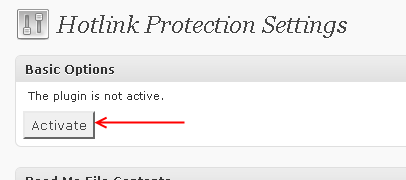Reduce Bandwidth Used by Websites – Workout on Images to Save Bandwidth
Written by Pavan Kumar on August 10, 2009
Most of us host our websites in shared servers and few of them have limited bandwidth / data transfer which websites exceed every month. Images are major part of websites which consume most of the bandwidth if not used with caution. If you are one among those who run out of bandwidth limits, you should think of three important possibilities for saving bandwidth. These are easy to implement and can avoid your bandwidth loss to a greater extent.

- Optimizing images – Read the web image optimization tutorial.
- Host images on free image hosting services like tinypic or Imageshack etc
- Avoid hotlinking of images hosted on your server
First two points are clear for most of you, but the third one is quite unfamiliar for newbies in websites. Image hotlinking is nothing but stealing of your bandwidth by some other webmaster which is done by displaying the images hosted on your server. This is a bad practice followed by few webmasters and bloggers and if the page which uses the images on your server is popular, you simply lose heavy bandwidth without even knowing who is consuming the bandwidth.
Though there are no sure ways to detect image hotlinking, there are ways to prevent that. This requires you to edit .htaccess file – check out the tutorials to edit your htaccess file here and here. The second link here also has a hotlink checker which you might find useful.
If you are a wordpress user, you might wish to make the entire job as easy as a click with image hotlink protection plugin. This plugin is a easy to use plugin, just install, activate the plugin. After activating the plugin, you have to activate hotlink protection in the plugin settings page.

Also read: Internet Speedometers, Jump website iframes, Add inline images to email
People who liked this also read:



somehow the image hotlink protection plugin didn’t work for me, i wasn’t able to activate it, but manually editing the .htaccess is a good idea